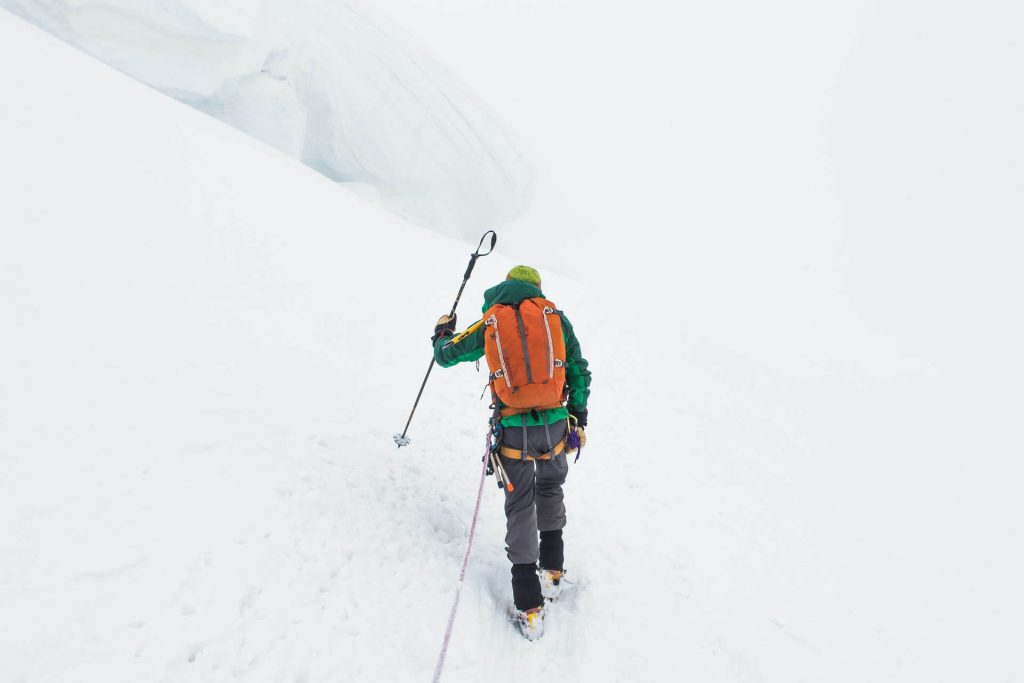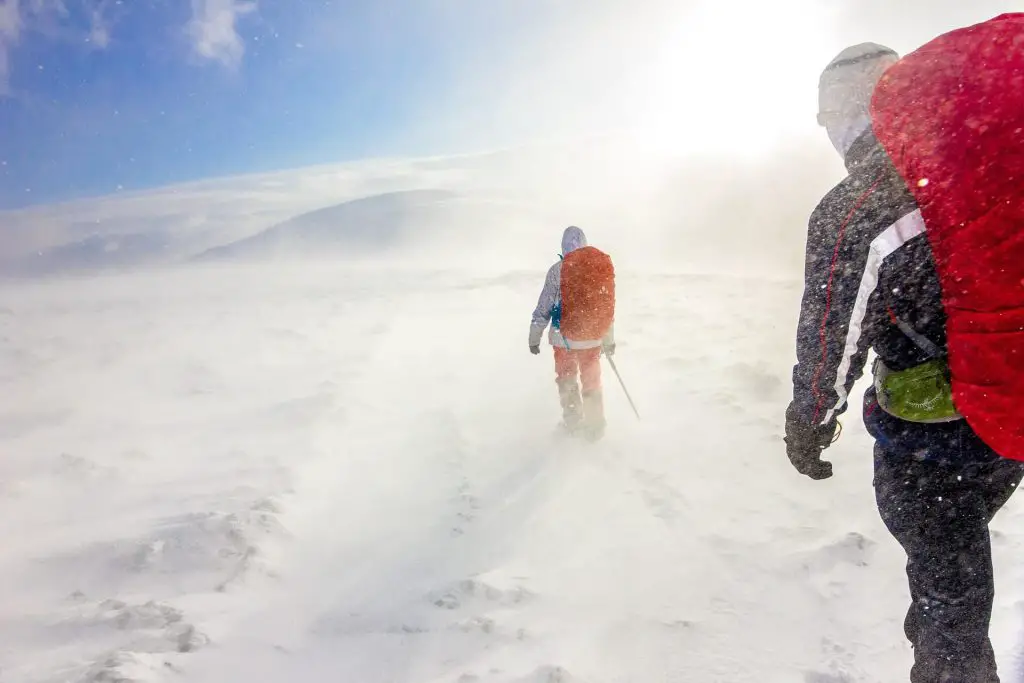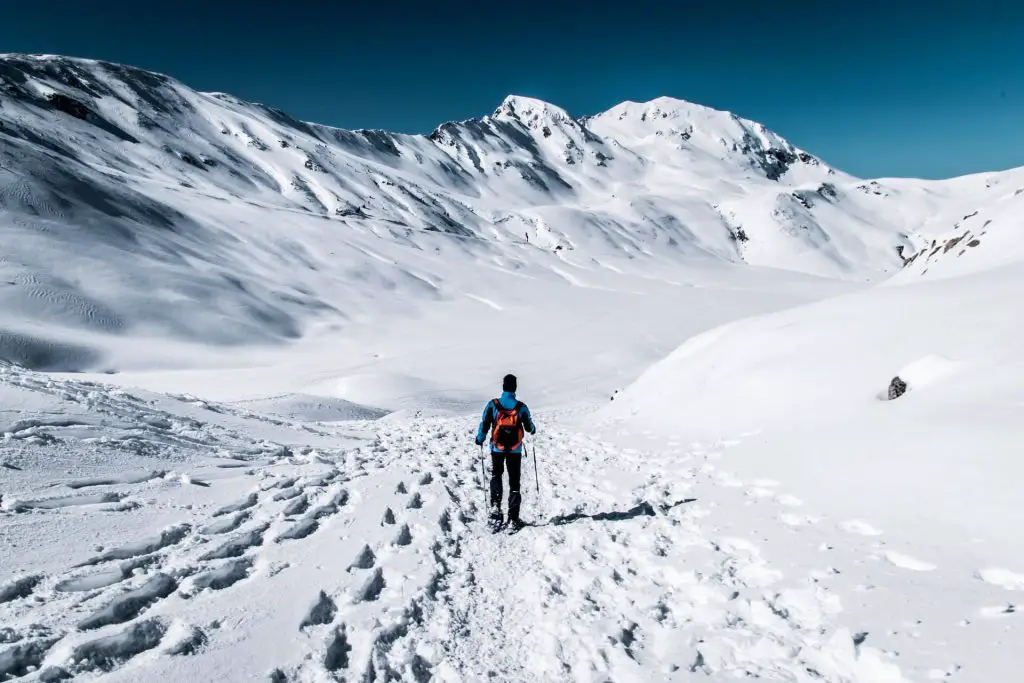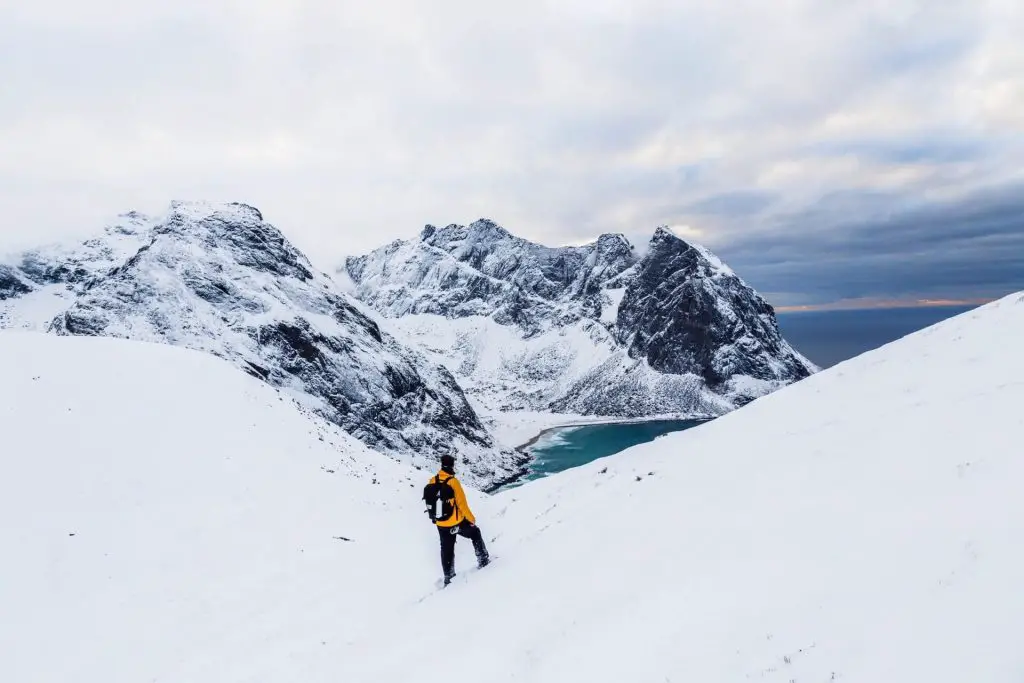
Hiking in 20 degree weather will take you to a winder wonderland, with snow covered trails, powdery white trees or peaks, and gorgeous snow blanketed landscapes you will never forget. With all of this beauty will also come challenges from the elements. What should you wear to keep yourself warm and comfortable when hiking in 20 degree weather?
To hike comfortably and protected in 20 degree weather you should wear a thick base layer shirt, a down jacket for insulation, and a thick external jacket to protect from the window and elements. For your bottom layers wear base layer leggings, hiking pants or snow pants, wool socks, and some gaiters. For your head you should wear a beanie and a balaclava.
Hiking in 20 degree weather can be a challenge, but as long as you have the right clothing and are mindful of the weather you will be able to hike safely and comfortably. I have been able to hike in the freezing cold winter in the Grand Canyon, Bryce Canyon, and other national parks by using the clothing system below. There are some nuances you should be aware of before you make any purchases or head out on your trail.
What to wear for top layers in 20 Degree Weather
Base Layer
The base layer is one of the most crucial in 20 degree weather. This layer touches your skin so you want to pick the right material so you feel comfortable. For the base layer you should opt for polyester or wool. These are the best materials to wick moisture from your sweat to help you feel warm and comfortable as you move.
Wearing the wrong base layer can make you soak up sweat and feel very uncomfortable. You do not want to wear any kind of cotton as it absorbs and holds moisture. This moisture will make you feel very cold in 20 degree weather, so avoid cotton at all costs. If the cotton gets wet from snow then you are in trouble as it will take forever to dry.
Columbia Base Layers on Amazon
Mid-Layer
The mid-layer plays am important role. This layer makes sure you are well insulated and warm. This is the layer that makes or break if you feel cozy and comfortable. For the mid-layer you should get a good down jacket or fleece jacket. I typically prefer synthetic down during snow so it can dry faster if it gets a bit wet and down weighs less than fleece.
The goal of the mid-layer is to make sure you are warm and comfortable, but not hot and sweaty. You want to avoid feeling overheated and sweating as your sweat will make you feel very cold in 20 degree weather. It is okay to naturally sweat due to hiking around, but you want to try to limit the amount of sweat you generate from your clothes being too warm.
External Layer
The external layer will help keep the elements out. This layer should block wind, rain, and snow from getting to your mid-layer and base-layer. Finding a jacket that does all three will be the difference of enjoying your 20 degree hike or feeling miserable because your layers are soaked.
The things to consider when buying your external layer is the weight, breathability, and sizing. While you do want a protective outer layer you should get one that isn’t that heavy since you will be lugging it around as you hike. The next thing to look into is breathability, some jackets have zippers in the armpit area and arms to allow air to better flow to your body while keeping the elements out. The last thing to consider is sizing, you should be able to comfortably wear a down or fleece jacket on the inside and have mobility in your arms. These three layers will keep you warm and comfortable, now lets look at the bottom layers you should wear in 20 degree weather.
Columbia External Layers on Amazon
What to wear for bottom layers in 20 Degree Weather
Base Layer Leggings
In 20 degree weather its just as important to keep your legs warm. Most hiking pants are too thin to do the job, so to help your legs you should have a base layer of leggings. This will keep your legs nice and warm.
Some things to think about for base layer leggings are sizing and warmth rating. If you are someone who gets hot easily than you may want to look into a lighter weight and warmth rating pants. You don’t want to feel extra hot in your legs as you are hiking, so there is some trial and error, but opt for lighter ratings to be careful. However, if you run cold and feel like you can’t generate heat then go for the thicker leggings.
Hiking Pants
For the bottom layer you really can only have two layers. The pants you choose should protect you from the elements. This is to keep the snow out and should not soak at all. In 20 degree weather you will likely be encountering snow on the trail and you don’t want that to get your pants wet.
For hiking pants make sure they are breathable, protect from snow melt, and are large enough to be able to fit your leggings. Bring your leggings to the store when trying on various snow hiking pants so you know you will be comfortable out on the trail.
Columbia Winter Pants on Amazon
Wool Socks
One of the most important things to layer is your feet. To keep your feet protected, warm, and cozy you should opt for wool socks. Wool socks will help wick away moisture, keep your feet warm, keep them padded and protected. While they do cost a lot more than normal cotton socks, they are definitely worth the splurge.
For wool socks in 20 degree weather you should get thicker pairs to keep your feet warm. Also make sure that you can fit your thicker wool socks into the hiking boots of your choice. Sometimes your boots will feel way too tight with the thicker wool socks.
Darn Tough Wool Socks on Amazon
What accessories to bring when hiking in 20 Degree Weather
Head Cover
Even in 20 degree weather, I just keep it simple for head cover and wear a beanie. This is to keep your head warm and help make you feel cozy in the freezing cold. Morale matters in this cold of weather.
For beanies you have your choice of thick beanies, thin beanies, beanies with puffy balls, different colors. Any of them work, but the main consideration is material. Just don’t get cotton and you will be fine. The beanies I use are typically polyester because wool feels too scratch for me, but its up to whatever material you feel most comfortable in.
Columbia Watch Cap Beanie on Amazon
Face Cover
When I first started hiking in the cold, I had no idea face coverings even existed. Needless to say my face was frozen during cold weather hikes. For face coverings you should get either a balaclava or a neck gaiter. The balaclava is a bit more restrictive, but covers your face and ears. Wearing a balaclava is definitely the most warm my face has ever been and it also makes you look like a ninja.
For neck gaiters this will keep the lower half of your face warm and your ears, but you have to pull it up at a weird angle. These are more flexible but don’t wrap all the way from the top of your head.
Under Armour Balaclava on Amazon
Gaiters
Now you have your entire body covered from head to toe, except you are missing one more thing. Imagine feeling fully protected then some snow gets into your boot. Game over. Your socks are wet and everything sucks. To prevent this you should get ankle gaiters. This will help keep snow and debris from entering your hiking boots.
Gaiters will make hiking a lot more relaxing if you post hole or step in ankle deep snow. Snow in boots is a bad time for everyone!
Outdoor Research Gaiters on Amazon
How cold is too cold for hiking?
Hiking at 20 degrees all the way to 10 degrees is possible, but can be dangerous and challenging. The temperature you want to avoid hiking at is 32 degrees. Once the temperature is below 32 degrees you are at major risk of frostbite. You can lose your fingers and toes if you are not properly equipped.
Check with your local ranger or cold weather mountaineer to see if you have the right gear and temperature to hike below 20 degrees. You also want to be mindful of weather and avoid snow storms and white outs.
Final Thoughts
Hiking in 20 degree can be challenging due to the cold and elements, but it is possible if you have the right layers and gear. Getting the right top layers and bottom so that you are warm and comfortable will keep you going on your journey in 20 degree weather.
Once you have your layers figured out the small accessories will make a huge difference. A cozy beanie, face covering, and good wool socks will make all the difference. Staying warm and hydrated will be key during your hike. Enjoy your cold weather hike!



